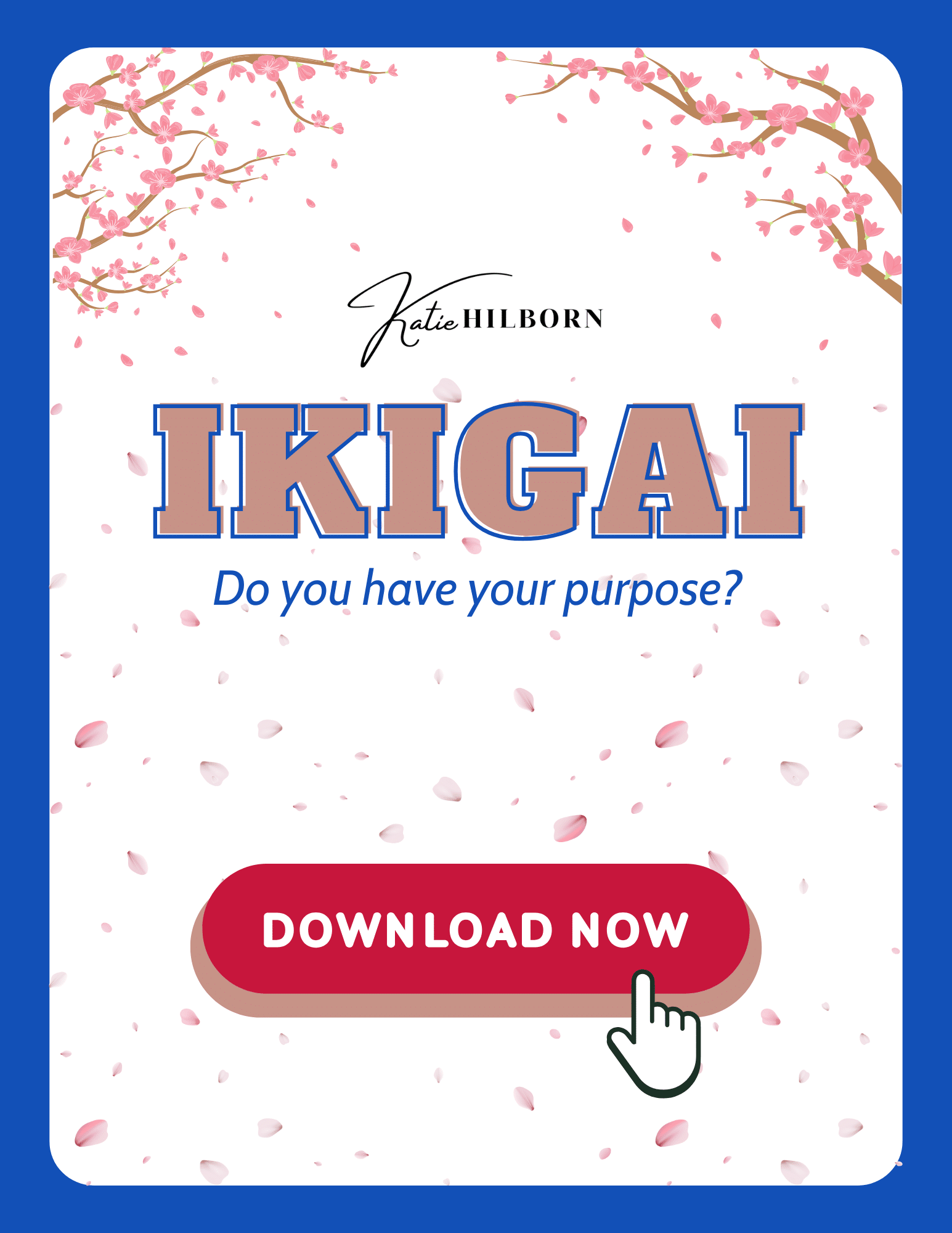In a world driven by deadlines and distractions, many of us wake up feeling unmotivated, like we’re sleepwalking through life. Now imagine waking up every morning with a clear sense of direction, fueled by a purpose so compelling it pulls you out of bed before your alarm. That’s the magic of Ikigai—a Japanese concept that goes beyond philosophy and into the heart of what makes life worth living.
Ikigai (pronounced “ee-key-guy”) is often described as your “reason for being.” It’s not just a lofty ideal; it’s the sweet spot where your passions, skills, and values intersect with the needs of the world. Think of it as a compass that points you toward a fulfilling, balanced life.
What sets Ikigai apart from other frameworks is its practicality. It’s not about chasing happiness or setting unrealistic goals—it’s about integrating joy and purpose into your daily actions. In Japan, Ikigai has long been credited with contributing to some of the highest life expectancies in the world. A study by the National Center for Biotechnology Information
In a world driven by deadlines and distractions, many of us wake up feeling unmotivated, like we’re sleepwalking through life. Now imagine waking up every morning with a clear sense of direction, fueled by a purpose so compelling it pulls you out of bed before your alarm. That’s the magic of Ikigai—a Japanese concept that goes beyond philosophy and into the heart of what makes life worth living.
Ikigai (pronounced “ee-key-guy”) is often described as your “reason for being.” It’s not just a lofty ideal; it’s the sweet spot where your passions, skills, and values intersect with the needs of the world. Think of it as a compass that points you toward a fulfilling, balanced life.
What sets Ikigai apart from other frameworks is its practicality. It’s not about chasing happiness or setting unrealistic goals—it’s about integrating joy and purpose into your daily actions. In Japan, Ikigai has long been credited with contributing to some of the highest life expectancies in the world. A study by the National Center for Biotechnology Information found that people with a strong sense of purpose, like those who practice Ikigai, are 31% less likely to die of cardiovascular diseases and have lower levels of stress and depression. Ikigai is more than a concept—it’s a way of living. It’s the intersection of what you love, what you’re good at, what the world needs, and what you can be paid for. Whether you’re feeling stuck, seeking clarity, or simply curious, this blog will guide you through practical tools to uncover your Ikigai and align your life with purpose.
found that people with a strong sense of purpose, like those who practice Ikigai, are 31% less likely to die of cardiovascular diseases and have lower levels of stress and depression. Ikigai is more than a concept—it’s a way of living. It’s the intersection of what you love, what you’re good at, what the world needs, and what you can be paid for. Whether you’re feeling stuck, seeking clarity, or simply curious, this blog will guide you through practical tools to uncover your Ikigai and align your life with purpose.
Let’s dive into how you can discover your own Ikigai and start waking up with intention every morning.
What is Ikigai?
Ikigai (生き甲斐) is a Japanese term that loosely translates to “life’s worth” or “reason for being.” It’s not about a singular goal but a harmonious integration of four key elements:
- What you love (your passion)
- What you’re good at (your talents)
- What the world needs (your mission)
- What you can be paid for (your profession)
Picture these as overlapping circles in a Venn diagram. The center where all four elements converge? That’s your Ikigai. It’s the powerful force that makes your life feel meaningful and worthwhile.
Why Ikigai Works: The Science and Stories Behind It
The brilliance of Ikigai lies in its balance. Unlike frameworks that focus solely on career goals or personal happiness, Ikigai bridges the gap between individual fulfillment and societal contribution. Research supports its effectiveness:
- Health Benefits: The Tohoku University Graduate School of Medicine conducted a 13-year study of over 43,000 Japanese adults and found that those who practiced Ikigai had a 20% lower risk of dying prematurely.
- Mental Clarity: A study published in The Journal of Positive Psychology showed that people with a strong sense of purpose experienced lower levels of stress and burnout.
These aren’t just numbers—they’re proof that aligning your daily life with your deepest values can transform your physical and mental well-being.
Ikigai: Your Sweet Spot and Daily Motivator
At its core, Ikigai is about waking up with clarity and drive. It’s not about waiting for the perfect moment or achieving some monumental goal. It’s about finding fulfillment in the everyday—the small, meaningful actions that align with your true self.
Imagine a life where every decision you make, every action you take, flows naturally from your unique combination of passions, talents, and purpose. That’s the power of Ikigai.
Let’s break down how you can find yours.

Step 1: Explore the Four Elements of Ikigai
1. What You Love (Your Passion)
Ask yourself:
- What activities make you lose track of time?
- What topics light you up in conversations?
- If money weren’t an issue, how would you spend your days?
Example: For me, adventure has always been a guiding force. From snowboarding in mountain forests to walking pumas in the Bolivian jungle, I’ve found passion in exploration and connection with nature.
Imagine a life where every decision you make, every action you take, flows naturally from your unique combination of passions, talents, and purpose. That’s the power of Ikigai.
Let’s break down how you can find yours.
2. What You’re Good At (Your Vocation)
This is where your skills and talents come into play. Reflect on:
- What do people consistently compliment you on?
- What challenges do you enjoy tackling?
- What feels effortless yet impactful?
Pro Tip: If you’re unsure, ask your “village.” Sometimes, others can see your strengths more clearly than you can.
3. What the World Needs (Your Mission)
Consider:
- What breaks your heart about the world?
- What change do you want to see in your community or globally?
- How can your skills and passions serve others?
For me, this became crystal clear after uncovering a child trafficking ring in Nepal. It was a pivotal moment that recalibrated my compass, leading me to open the Nepal Girls INpowerment Center.
4. What You Can Be Paid For (Your Profession)
Yes, purpose can coexist with practicality. Reflect on:
- What are people willing to pay for that aligns with your skills?
- How can you turn your passion into a sustainable livelihood?
- What side hustles or opportunities could support your mission?
Step 2: Find the Overlap
Once you’ve explored these four areas, look for the connections. Your Ikigai doesn’t have to hit all four elements equally right away—start where you can and build from there.
Step 3: Overcome Common Barriers
Even with a framework as inspiring as Ikigai, self-doubt and fear of failure can creep in. Here’s how to push through:
- Reframe failure: Every misstep is a breadcrumb leading you closer to your purpose.
- Start small: Purpose isn’t always a grand epiphany; it often reveals itself through small, consistent actions.
Trust your intuition: Your inner compass will guide you if you take the time to listen.
Real-Life Ikigai Stories
The Artist Who Found Her Mission
Emily, a graphic designer, loved art but felt unfulfilled in her corporate job. By exploring Ikigai, she realized her mission was to create illustrations that raise awareness about mental health. Today, she runs a thriving business doing exactly that.
My Own Journey
When I first arrived in Nepal, I had no plan—just a deep sense of calling. That initial leap of faith turned into disaster relief missions, building schools, and creating programs that reduced trafficking rates to zero. Each step recalibrated my compass, revealing my True North one breadcrumb at a time.
Step 4: Take Action
Ikigai isn’t just about introspection—it’s about action. Here are some ways to integrate it into your life:
- Morning journaling: Reflect on how your daily tasks align with your Ikigai.
- Vision board: Create a visual representation of your passion, mission, vocation, and profession.
- Check-ins: Regularly reassess and adjust as needed. Purpose is fluid, not fixed.





